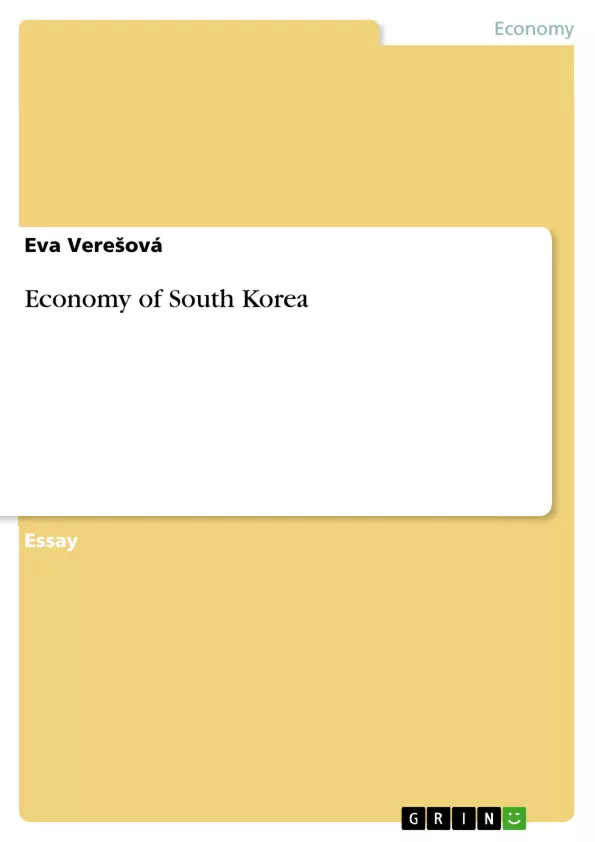The division of Korea into South and North following the Korean War in 1950-1953, left the countries devastated and their economy completely destroyed. Both of the new formed republics chose a specific approach to rebuild the economy. Now, 60 years later, the results of each strategy are clearly evident.
What were the key factors that boosted South Korea’s economy to the top position in the world? What measures can South Korea take to keep this front position also in the future? How could the different political developments influence the economic prosperity of each country? These questions will be answered in the following pages.
Inhaltsverzeichnis (Table of Contents)
- Introduction
- Economy of South Korea
- Hard-working Workforce
- Power of Conglomerates
- Small and Medium-sized Firms
- Social Cohesion
- Tax System
- Political Situation
- Conclusion
Zielsetzung und Themenschwerpunkte (Objectives and Key Themes)
This paper examines the economic development of South Korea, exploring the factors that contributed to its remarkable growth after the Korean War. The paper analyzes the key elements of the South Korean economic model, including its hard-working workforce, powerful conglomerates, small and medium-sized enterprises, and social cohesion. It also discusses the potential challenges facing South Korea's continued economic prosperity and considers the impact of political developments on the country's economic future.
- Economic growth and development in South Korea
- The role of the South Korean workforce in economic success
- The impact of conglomerates and small and medium-sized enterprises
- Social cohesion and its influence on the economy
- Challenges and future prospects for South Korea's economy
Zusammenfassung der Kapitel (Chapter Summaries)
The introduction provides context for the paper by discussing the devastating impact of the Korean War on both South and North Korea. It outlines the key questions that the paper will address, focusing on the factors that led to South Korea's economic success and the challenges it faces in maintaining its position.
Chapter 2, "Economy of South Korea," delves into the remarkable economic growth experienced by South Korea following the Korean War. It highlights the country's impressive economic indicators, including its high GDP per capita and improvements in income inequality. The chapter analyzes the factors that contributed to this success, emphasizing the role of a hard-working workforce, powerful conglomerates, small and medium-sized firms, social cohesion, and the tax system.
Chapter 3, "Political Situation," explores the impact of political developments on the South Korean economy. This chapter will likely analyze the country's political system, its relationship with other countries, and the influence of political stability on economic growth.
Schlüsselwörter (Keywords)
South Korea, economic growth, conglomerates, chaebols, SMEs, workforce, social cohesion, political situation, Asian financial crisis, OECD, GDP, income inequality, unemployment, export, tax system.
- Quote paper
- Eva Verešová (Author), 2014, Economy of South Korea, Munich, GRIN Verlag, https://www.grin.com/document/351557



